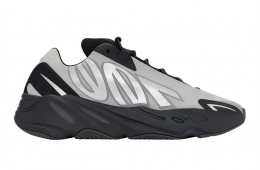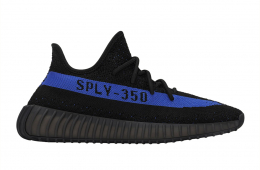Adidas
Adidas, a global leader in the sporting goods industry, was founded in Germany by Adi Dassler in 1949 and has since become an iconic brand synonymous with innovation, quality, and style. Specializing in a wide array of products ranging from athletic footwear and apparel to accessories and equipment, Adidas consistently aims to enhance the performance of athletes worldwide. Notably, the brand is easily recognized by its distinctive three-stripe logo, which has become a globally acknowledged symbol of sports excellence. With a rich history of groundbreaking products, including the revolutionary Boost technology in their running shoes and collaborations with high-profile designers and celebrities, Adidas not only meets athletes' needs but also sets trends in the fashion industry.
In addition to its product line, Adidas has a strong commitment to sustainability and social responsibility. The company actively engages in initiatives to reduce its environmental impact, such as using recycled materials in its products and striving to achieve climate neutrality across its operations. Adidas also plays a significant role in the communities it serves through various outreach programs intended to promote health, fitness, and inclusivity. By focusing on innovation, corporate responsibility, and consumer engagement, Adidas has solidified its position as a forward-thinking, influential force in both sports and lifestyle sectors, continually inspiring people all over the world to embrace a more active and conscious way of living.
read moreHistory of Adidas
Adidas, the renowned athletic apparel and footwear company, has a rich history dating back to the early 20th century. The company's origins are deeply intertwined with the story of two German siblings, Adolf (Adi) and Rudolf Dassler, who would go on to create a global sportswear empire. The journey of Adidas is one marked by innovation, rivalry, and remarkable success in the world of sports.
The Beginnings: Gebrüder Dassler Schuhfabrik
The genesis of Adidas can be traced to the small town of Herzogenaurach in Bavaria, Germany. In 1924, Adolf and Rudolf Dassler founded the Gebrüder Dassler Schuhfabrik (Dassler Brothers Shoe Factory). Adolf, a skilled craftsman with a keen interest in sports, was responsible for designing and producing the shoes, while Rudolf, a more outgoing and business-savvy individual, handled the sales and marketing.
Adi Dassler's primary goal was to create high-quality athletic shoes that could enhance performance. The Dassler brothers’ early creations, designed with input from athletes, became increasingly popular in the local sports community. Their breakthrough came during the 1936 Berlin Olympics when American sprinter Jesse Owens won four gold medals wearing their shoes. This victory brought international recognition to the Dassler brothers' products.
Split and the Birth of Adidas
The relationship between the brothers began to sour after World War II, leading to a significant rift in 1948. The reasons for the fallout are a subject of speculation, with theories ranging from personal disagreements to business-related conflicts. Whatever the cause, the outcome was the division of the Dassler company into two separate entities. Rudolf Dassler founded Puma, while Adolf rebranded his business as Adidas in 1949, a portmanteau of his nickname, Adi, and the first three letters of his last name.
Adi Dassler registered Adidas with the three-stripe logo, which would later become iconic. His mission was to continue innovating and enhancing athletic footwear. By focusing on performance and maintaining close relationships with athletes, Adi ensured that Adidas products were synonymous with quality and excellence.
Innovation and Growth
Adi Dassler's commitment to innovation was a driving force behind Adidas' early successes. One of the most significant innovations was the creation of the screw-in stud for football boots in the early 1950s. These boots allowed players to change studs based on field conditions, providing better grip and reducing the risk of injury. This invention contributed to the German national football team's victory in the 1954 World Cup, catapulting Adidas' reputation to new heights.
Throughout the 1960s and 1970s, Adidas expanded its product line to include various sports equipment, clothing, and accessories. The company became a pioneer in developing specialized footwear for different sports, catering to the needs of athletes across disciplines. Adidas continued to collaborate with top athletes, ensuring that their products were designed with the highest standards of performance and durability.
Global Expansion and Endurance
By the 1980s, Adidas had established itself as a global brand, with a presence in numerous countries. The company's distinctive three-stripe branding became a symbol of athletic excellence and style. However, this period also brought challenges, as Adidas faced increasing competition from emerging sportswear brands like Nike and Reebok.
The 1984 Los Angeles Olympics marked a turning point for Adidas. While the brand continued to sponsor top athletes and teams, it struggled to maintain its dominance in the rapidly changing market. To regain its competitive edge, Adidas embarked on a series of strategic moves. One notable development was the acquisition of French athletic footwear company Salomon in the late 1990s. This diversification allowed Adidas to enter the outdoor and winter sports markets, broadening its product portfolio.
Technological Advancements and Cultural Impact
Adidas' commitment to innovation remained unwavering as the company entered the new millennium. The introduction of cutting-edge technologies, such as the Torsion system for better stability in running shoes and the Boost cushioning for enhanced energy return, demonstrated the brand's dedication to improving athletic performance. These innovations resonated with both professional athletes and everyday consumers, cementing Adidas' reputation as a leader in sports technology.
Beyond its influence in sports, Adidas made significant inroads into popular culture and fashion. Collaborations with high-profile designers, musicians, and artists—such as Yohji Yamamoto, Kanye West, and Pharrell Williams—resulted in limited-edition collections that blurred the lines between sportswear and streetwear. The iconic Superstar and Stan Smith sneakers became cultural symbols, embraced by fashion enthusiasts and trendsetters worldwide.
Sustainability and Corporate Responsibility
In recent years, Adidas has also demonstrated a strong commitment to sustainability and corporate responsibility. Recognizing the environmental impact of the fashion and sportswear industry, the company launched several initiatives aimed at reducing its carbon footprint and promoting responsible sourcing practices.
One notable initiative is Adidas' partnership with Parley for the Oceans, an organization focused on addressing marine plastic pollution. Together, they developed products made from recycled ocean plastics, such as the popular Parley editions of the Ultraboost running shoes. Additionally, Adidas set ambitious targets to use sustainable materials in their products and eliminate single-use plastics from their supply chain.
Overcoming Challenges and Future Prospects
Adidas, like any successful company, has faced its share of challenges. One significant challenge emerged in the early 2000s when the company struggled to keep up with the rapid changes in the sportswear market. Its conservative approach to design and marketing led to a decline in market share, especially in comparison to competitors like Nike. However, under the leadership of CEO Herbert Hainer, Adidas adopted a more dynamic strategy. Hainer's emphasis on innovation, marketing, and appealing to younger consumers helped revitalize the brand.
Adidas' collaboration with Kanye West, beginning in 2013 with the Yeezy line, marked a major turning point. The Yeezy sneakers not only became a commercial success but also signified a shift in the company's marketing approach, focusing on limited-edition releases and creating hype around their products.
Looking ahead, Adidas is poised to continue its legacy of innovation and adaptability. The company has outlined a comprehensive sustainability roadmap called "Own the Game," which includes goals to achieve climate neutrality by 2050 and reduce greenhouse gas emissions across its entire value chain. Moreover, Adidas aims to continue leveraging digital technologies, such as 3D printing and data analytics, to enhance product customization and consumer experiences.
Adidas in Sports Sponsorship and Events
One of the key factors behind Adidas' global influence has been its strategic involvement in sports sponsorships and major sporting events. The company has a longstanding tradition of sponsoring some of the world's most prominent athletes, teams, and tournaments. Adidas' association with high-profile events such as the FIFA World Cup, the Olympics, and the UEFA Champions League has not only provided immense visibility but also reinforced its credibility as a premier sports brand.
Adidas' sponsorship agreements extend across various sports, including football, basketball, tennis, athletics, and more. Prominent athletes such as Lionel Messi, James Harden, Caroline Wozniacki, and many others have served as brand ambassadors, showcasing Adidas products on the world stage. These partnerships have not only boosted Adidas' sales but also further entrenched the brand's presence in the hearts of sports enthusiasts worldwide.
Conclusion
The history of Adidas is a testament to the enduring power of innovation, determination, and a commitment to excellence. From its humble beginnings in a small Bavarian town to becoming a global powerhouse in the sportswear industry, Adidas' journey has been marked by remarkable achievements and transformative moments.
Adi Dassler's vision of creating footwear that enhances athletic performance laid the foundation for a brand that continues to push the boundaries of sports technology and fashion. Through decades of growth, challenges, and adaptation, Adidas has remained a trusted name for athletes and consumers alike.
As Adidas looks towards the future, its focus on sustainability, technological advancements, and strategic collaborations ensures that the brand will remain at the forefront of the sportswear industry. With a legacy built on a rich history of innovation and a commitment to making a positive impact, Adidas is poised to continue shaping the world of sports and fashion for generations to come.























